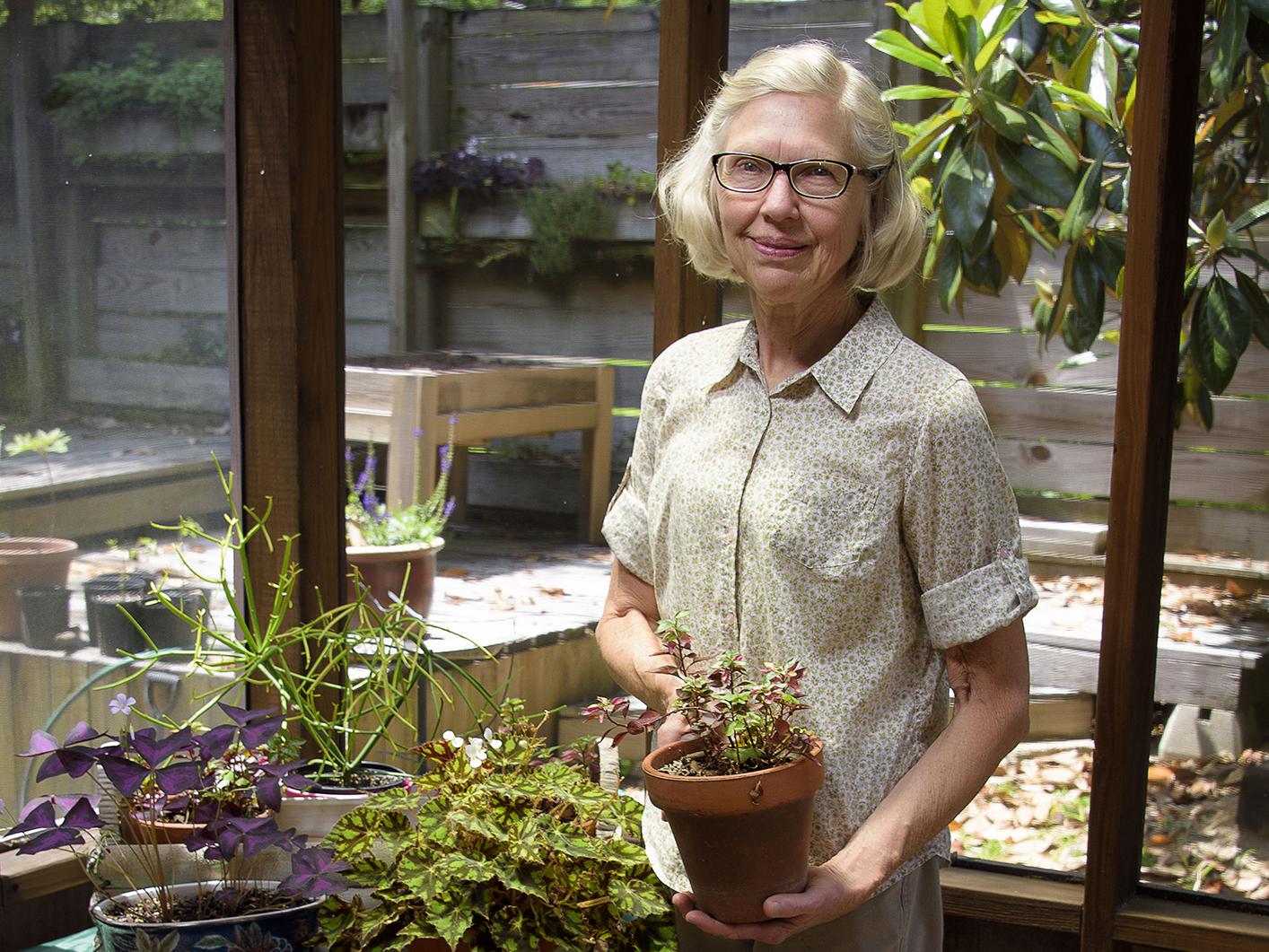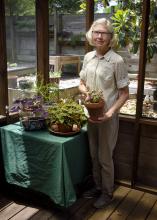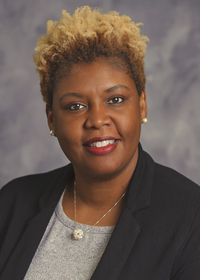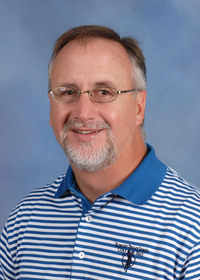Information Possibly Outdated
The information presented on this page was originally released on May 4, 2017. It may not be outdated, but please search our site for more current information. If you plan to quote or reference this information in a publication, please check with the Extension specialist or author before proceeding.
Retired instructor uses gardens to keep teaching
HATTIESBURG, Miss. -- Lida McDowell taught science and math for 30 years at the high school and university levels, and she keeps finding ways to educate while enjoying an interest she had no time to pursue until retirement.
The raised-bed vegetable gardens she and church friend Karen Walker maintain year-round serve as a classroom for a young audience at Thames Elementary School in Hattiesburg.
“What we’re trying to do is get the kids to enjoy nature, be outside and appreciate where their food comes from,” McDowell said.
As a Master Gardener volunteer since 2013, McDowell commits to 20 hours of volunteer service each year, including landscaping at the Southern Pines Animal Shelter and leading the Master Gardener group that refurbished and helped students plant gardens at Petal Upper Elementary. In addition to her Master Gardener commitment, she took on the Thames Elementary project as part of her church’s outreach.
McDowell is a member of the Pine Belt Master Gardeners club, which is one of more than 60 horticultural and community service groups statewide under the supervision of the Mississippi State University Extension Service.
Until eight years ago, McDowell grew nothing at all -- teaching mathematics at the University of Southern Mississippi and rearing four children did not allow her the luxury of hobbies -- but she had wanted to garden for years.
“I’ve always been interested in watching plants grow,” she said. “I taught elementary teachers, and we did some service-learning projects in which we created gardens at school. That’s when I really got into gardening as a hobby. At that time, I had a lot of book knowledge about gardening but not a lot of practical gardening experience.”
At home, she likes to grow native plants alongside vegetation she has brought back from family vacations. Her regular produce ranges from red buckeyes to pumpkins to English peas. She is also a compost enthusiast.
Her church, University Baptist Church, adopted Thames Elementary six years ago and built two gardens to add to an octagonal butterfly bed that was already there.
“The teachers who worked with special needs children were the most interested in the gardens,” McDowell said.
After seeing how well the students responded to growing their own produce, McDowell and Walker decided to build four more gardens. One of the teachers applied for a grant, and the funding was used to build the new beds. Vegetables, peanuts, sweet potatoes and plants that attract butterflies are among the plants grown there. They often feed students the produce they grow.
“There’s so much math you can do with a garden if you think about it,” she said. “You can measure the volume of soil needed to fill a raised bed or measure between seeds as they are planted. You can graph the growth of plants. Every time we harvest something, we have a picture of the flower, the leaves, the stem and the roots so they can identify the part of the plant that is eaten.”
Forrest County Extension agent Tawnya Holliman said she admired McDowell’s ability to use one of her hobbies as a tool to give back to her community.
“She has a great variety of vegetables and flowers she grows at home, but her service projects show how knowledgeable she is,” Holliman said. “Lida is involved in all aspects of growing and planting at her school gardens and works with the teachers and students from planting to harvesting every year. She keeps them all involved in every aspect of the gardening experience.
“If she were not a Master Gardener, she would still be active at the schools,” Holliman added. “She is passionate and dedicated to gardening and service.”
McDowell said she enjoys working with young children because she enjoys seeing them learn about agriculture from planting a seed and watching it develop into a plant that produces food.
“The neatest thing is to see a kid pull up a carrot,” she said.





